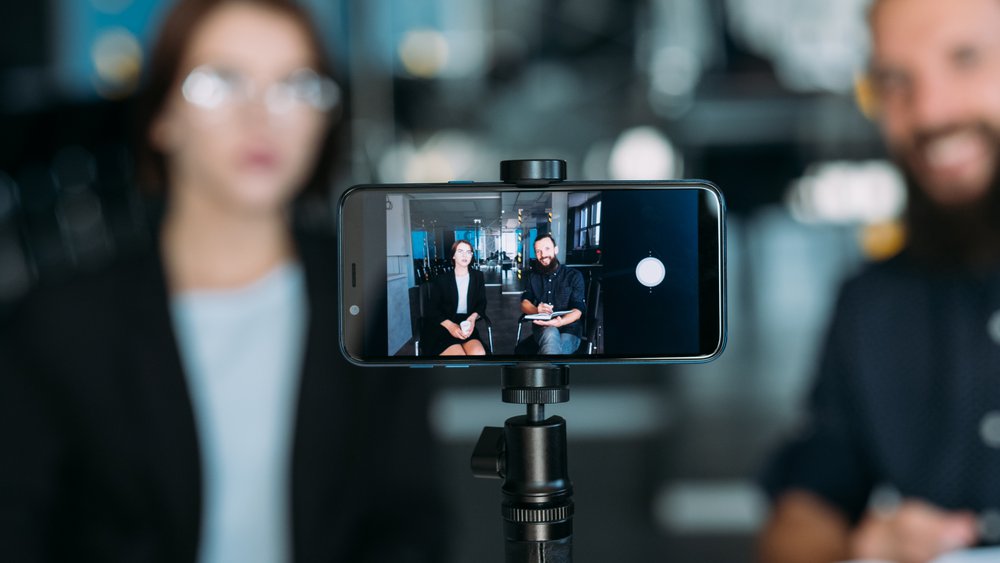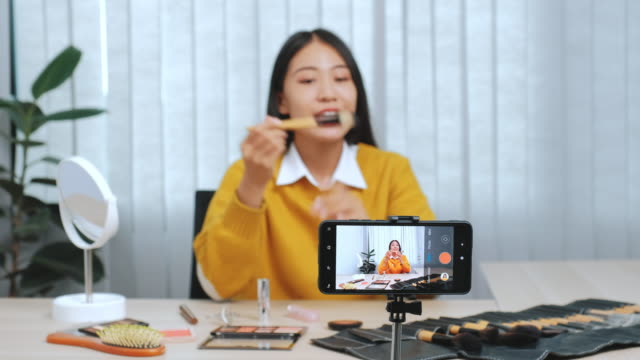What Happened To The Viral Videos After?

As the Internet has grown and changed, viral videos have become a big part of what people see online. People quickly become interested in and watch millions of videos in a short time. Over the years, viral videos have gone through many different styles that have caught the attention and hearts of people all over the world.
It’s interesting to note that videos that go viral tend to be one-of-a-kind and stand out from videos that don’t go viral. It’s possible that they show a certain time, a strong emotional reaction, or a unique idea or thought. This uniqueness separates them from other videos and makes them share-worthy content that is highly likely to be circulated on social media platforms.
Viral videos can be categorized into several different categories, including music videos, funny videos, and quitting videos. Usually, a music video has a well-known song. Conversely, hilarious movies have amusing elements that cause viewers to grin or chuckle. Conversely, those that create departing images usually do so in a creative and enjoyable manner.

How Did They Become Viral?
The people who make content often don’t understand how viral videos got so famous. There are many things that can cause a video to go viral, such as using the right hashtags, sharing it on social media, or just plain luck. This piece will tell us more about how videos go popular and what happens to them after they get a million views.
Relevant Hashtags
If you want more people to see what you post on TikTok, you need to use the right words. Hashed words help people find your content faster by putting it into groups. There may be some views if you use broad hashtags like #funnyvideos or #onlinevideo, but your chances of going viral will be higher if you use hashtags that are specific to your audience.
Taking part in popular word tasks is a fun way to get your work seen. These tasks can help you get more attention and reach people who aren’t already following you. They’re also a fun way to show off your talent and interact with people who see your videos.
To get the most out of hashtags on TikTok, here are some tips:
1) Use a mix of big and small terms that are related to your post. This will help you reach more people while still focusing on the ones you want to reach.
2) Don’t use more than three to five hashtags in a post. Too many hashtags can appear spammy and might turn people off.
3) Research trending hashtags that are relevant to your content and participate in hashtag challenges that are relevant to your brand.
4) Participate in community hashtag challenges. Engage with other creators by commenting, resharing, or dueting with their content to increase your visibility and reach.
Popular Creators and Content Creators
TikTok has become a viral platform for sharing creative content through short-form videos. Some TikTok creators have risen to fame due to their unique content, engaging themes, and massive followings. Let’s take a look at the top 5 most popular and influential TikTok creators and their most viral videos.
- Charli D’Amelio: With over 105 million followers, Charli D’Amelio is the most popular creator on TikTok. Charlie is known for her impressive dance moves, lip-synching skills, and relatable content. Her most viral video to date is a dance duet with Addison Rae, which has over 44 million views.
- Addison Rae: Addison Rae is a close second to Charli with over 78 million followers. She is known for her energetic dance moves and comedic content. Her most viral video is a lip-synching video to Mariah Carey’s “Obsessed,” which has over 20 million views.
- Bella Poarch: With over 68 million followers, Bella Poarch is famous for her lip-synching videos and catchy dance routines. Her most popular video is a dance to the song “M to the B” by Millie B, which has over 59 million views.
- Zach King: Zach King is a magician and filmmaker who has over 54 million followers on TikTok. He is known for his creative use of visual effects and storytelling. His most viral video is a levitation trick that has over 51 million views.
- Spencer X: Spencer X is a beatboxer who has over 52 million followers. His unique content showcases his beatboxing skills in various situations and scenarios. His most popular video features him beatboxing with police officers, which has over 19 million views.
These popular TikTok creators have unique content that resonates with their followers, leading to the virality of their videos. They bring something different to the platform and engage their fans through specific themes, like dance, comedy, storytelling, and magic. Their content is proof that TikTok provides a space for creators to showcase their talents and captivate a massive audience.
High-Quality Content
When it comes to TikTok, creating high-quality content is crucial to increase the chances of a video going viral. While there may be a bit of luck involved when it comes to viral content, focusing on creating high-quality videos is a surefire way to increase the likelihood of achieving millions of views.
High-quality content is characterized by its originality, creativity, and uniqueness. TikTok’s algorithm rewards original content that hasn’t been seen before, so it’s important to try and create something that stands out from the millions of other videos on the platform. Being creative in the way that you present your ideas can take a video from ordinary to extraordinary. This uniqueness sets the video apart from others, making it more likely to go viral.
Different themes have been successful on TikTok, such as lip-synching, dance, comedy, and challenges. Incorporating these themes into your video content can help increase the chances of success, but make sure to put your spin on it to make it unique.
While it’s important to create a video that viewers will enjoy watching and engage with, it’s equally important to provide value. Whether it’s entertainment, education, or inspiration, make sure that your content is meeting the needs of your target audience. Providing value is what drives viewers to watch the video multiple times and share it with their friends and family.
Bit of Luck
When it comes to making viral videos, it’s easy to think that high-quality content and relevant hashtags are the only ingredients required. While these are crucial components, a bit of luck can also play a significant role.
TikTok’s algorithmic recommendations can propel a video to viral status without any prior following, creating a new class of internet stars with millions of views. However, this is a difficult feat to accomplish, as TikTok’s algorithm rewards and punishes content with little explanation.
This is where luck comes into play. While creators may do everything in their power to create high-quality content and use relevant hashtags, there’s still a chance that their video won’t reach the desired level of viewership. On the other hand, a single piece of content, just by chance, could be the perfect combination of factors that when compounded makes it go viral instantaneously.
What Platforms Did They Appear On?
Viral videos have become a ubiquitous phenomenon on social media platforms, with millions of viewers tuning in to watch share-worthy content. But what happens after a video goes viral? In this article, we will explore the different social media platforms that are most commonly associated with viral videos and the impact that each platform has on the video’s continued success.
Major Social Media Platforms
Social media platforms have played a significant role in making viralvideo reach millions of views and shares. Once the videos have stopped being shared, you can find them all on this website to keep watching as much as you like! TikTok, Instagram, Facebook, and YouTube are among the most popular social media platforms that enable the easy creation and sharing of short video content.
TikTok has become the go-to platform for creating and sharing short, sharable videos that have the potential to go viral. With over 1.2 billion global active users, the platform’s unique features, such as duet, which enables users to create video responses to each other’s videos, hashtag challenges, and collaborative video tools, have made it easier for content creators to create high-quality content. TikTok’s target audience is primarily young people aged between 16 and 24, and popular creators like Charli D’Amelio, Addison Rae, and Bella Poarch have already gained millions of followers.
Instagram, with over 1 billion monthly active users, offers the opportunity to create and share short videos on their feeds, reels, and stories. The platform’s focus is on visual content, and its unique features such as filters, music, and a range of editing tools make it the preferred choice for creating visually appealing content. Instagram’s target audience is primarily millennials and Gen Z, and popular creators like Kylie Jenner, Selena Gomez, and Ariana Grande dominate the platform. Hashtags are also a critical component of Instagram, with popular hashtags such as #throwback, #motivationmonday, and #tbt attracting millions of views.
Facebook, with over 2.8 billion monthly active users, may be older than other social media platforms but still provides an excellent opportunity for creating and sharing video content. The platform’s unique features, such as the option to share live videos and the Facebook Watch feature, make it easier for content creators to reach a larger audience. Facebook’s target audience is broader, ranging from Gen X and Baby Boomers to younger generations. Popular creators like Tasty and Tastemade have gained significant traction with their food videos, while other genres, such as music videos, also attract millions of views.
YouTube remains the leading platform for video content, with over 2 billion monthly active users. Its unique features such as the ability to monetize content, create playlists, and focus on long-form video content make it the go-to platform for users looking to create and share high-quality content. YouTube’s target audience is diverse and helps content creators reach a broader demographic. Popular creators like PewDiePie, Shane Dawson, and Lilly Singh have created online empires based on their YouTube channels, while music videos also rake in millions of views.
Music Video Platforms
Music video platforms have played a significant role in the success of many viral videos. With the advent of new music streaming services, viral content creators now have a wide range of options for sharing their work and reaching a larger audience. In this article, we’ll explore some of the different music video platforms that cater to both established and up-and-coming content creators.
Vevo is a music video platform that partners with some of the biggest names in the music industry, offering users a vast library of high-quality videos from their favorite artists. The platform has over 400,000 music videos, and its partnership with YouTube makes it highly accessible to a broad demographic. Vevo’s target audience is mainly music lovers and fans of popular artists. The platform’s primary focus is on high-quality music videos, making it an ideal platform for established artists. However, it can be challenging for up-and-coming artists to make their content stand out on the platform.
YouTube Music is a popular music streaming service that offers users access to millions of songs and music videos. The platform is designed to cater to all music genres and has a vast library of music videos from various artists. It also has unique features such as personalized playlists based on users’ listening habits and access to live performances and concerts. YouTube Music’s target audience is music lovers of all ages, making it a versatile platform for both established and up-and-coming artists. The platform’s algorithm also helps users discover new content and creators easily.
Apple Music is another popular music streaming service that integrates music videos into its platform. The platform has a library of over 70 million songs and operates in over 167 countries. Apple Music offers a unique feature called Apple Music 1, which is a 24-hour global radio station that plays a wide range of music genres and exclusive interviews with artists. The platform’s target audience is mainly Apple users, making it an excellent platform for targeting a more affluent demographic. However, the fact that the service is only available on Apple devices limits its accessibility to a broader audience.
Tidal is a music streaming service that prides itself on its high-quality music and exclusive content. The platform has over 70 million songs and offers users access to unique content from established artists such as Beyoncé, Jay-Z, and Kanye West. Tidal’s target audience is primarily music enthusiasts and fans of the exclusive content offered by the platform. Tidal has unique features such as Hi-Fi, which offers lossless audio and video quality, making it the ideal platform for those who prioritize high-quality audio and video content. However, the platform’s exclusivity does not cater to a broader demographic.
Vimeo is a video-sharing platform that caters to a wide range of video content, including music videos. The platform’s focus is on high-quality and artistic videos, making it an excellent platform for up-and-coming artists. Vimeo’s target audience is mainly creators and filmmakers who prioritize the quality of their work. The platform also offers unique features such as customizable video players and the ability to sell content directly to users. However, the platform’s smaller audience compared to other music video platforms makes it challenging to reach a more extensive audience.
Online Video Platforms
Online video platforms have revolutionized the way we consume content, and the viral videos phenomenon is a direct consequence of this. These platforms have provided a breeding ground for aspiring creators to showcase their talent and reach out to a larger audience. In this article, we will take a closer look at some of the popular online video platforms that have contributed to the rise of viral videos.
TikTok is one of the most popular video-sharing platforms that have rapidly gained popularity among audiences worldwide. It is known for its short-video format that ranges from 15 to 60 seconds, making it an ideal platform for creators who want to showcase their creativity quickly. TikTok’s user-friendly editing tools also allow creators to add various effects and filters to their videos, making it an engaging platform for users. The platform’s focus on user-generated content has made it a breeding ground for new talent and breakthrough viral videos.
YouTube is another popular online video platform that has been around for over a decade. It is known for its extensive library of videos, with millions of new videos being added every day. The platform’s user-friendly editing tools and its vast audience make it an excellent platform for established creators as well as up-and-coming talent. YouTube’s algorithm helps users discover new content and creators that are relevant to their interests, making it easier for creators to reach out to a larger audience.
Instagram is a social media platform that has grown from a simple photo-sharing app to a diverse video-sharing platform. The platform has introduced various collaborative video features such as the duet feature, which has made it easier for creators to collaborate. Instagram has also introduced the Reels feature, which allows users to upload short videos similar to those on TikTok. These features have made Instagram an engaging platform for creators looking to reach out to a larger audience.
Examples of Recent Viral Videos
Viral videos come and go, but some of them leave a lasting impact on the internet. These videos garner millions of views and responses on social media platforms, making them an instant sensation. From heartwarming stories to funny clips, viral videos have something for everyone. Here are some recent examples of viral videos and how they became popular on the internet.

Police Officers Dancing to ‘Toosie Slide’ by Drake
The viral video trend of police officers dancing to ‘Toosie Slide’ by Drake has taken social media platforms by storm. An overview of this trend reveals that it began with a video of three officers from the Norfolk Police Department in Virginia dancing together to the song and quickly spread across other popular platforms like TikTok, YouTube, and Instagram.
Several police departments and individual officers have since joined the trend, showcasing their favorite features of the song and demonstrating their dance moves in creative ways. Notable participants include the New York Police Department, the Los Angeles Police Department, and the Atlanta Police Department, among others.
So why do viewers seem to enjoy watching these videos? It elicits an emotional response that brings a bit of joy, laughter, or relief. They capture police officers in a fun and lighthearted moment, showing a side to them that is not typically seen, especially during serious times.
The trend proves that viral content is not only reserved for celebrities or influencers but rather, a creative way to showcase different personalities and professions. Police officers across the country are using their social platforms as a way to connect with their target audience and showcase their fun and humorous sides.
Ice Cream Challenge with Doja Cat’s ‘Say So’ as the Song
The Ice Cream Challenge video featuring Doja Cat’s ‘Say So’ as a song quickly became a viral sensation on social media platforms. It featured individuals or groups showing off their fun and creative dance moves while enjoying their favorite ice cream flavors. The video received an overwhelmingly positive response, garnering millions of views and shares across various platforms.
However, the Ice Cream Challenge video was not without controversy. Some users criticized the video for its lack of diversity and inclusion. Others pointed out the potential harm of promoting unhealthy food habits, especially to younger viewers. These controversies highlight the importance of responsible content creation, where creators should be mindful of the messages they send to their audience and ensure that their content reflects positive values and ethics.
One of the key elements that helped the video gain popularity was the use of relevant hashtags. The creators used a popular hashtag, #DojaCatSaySo, along with generic hashtags like #icecream and #dancechallenge to enhance the visibility of the video and get it noticed by a larger audience. Additionally, users created their hashtag variations to share their own Ice Cream Challenge videos, contributing to the virality of the content.
Kiki Dance Challenge Set to Drake’s ‘In My Feelings
The summer of 2018 saw the rise of a viral trend that took social media platforms by storm – the Kiki Dance Challenge. It involved participants dancing alongside a moving car, performing intricate choreography set to the chorus of Drake’s hit song “In My Feelings.” This challenge, also known as the In My Feelings Challenge, originated from a video posted by a Twitter user named @theshiggyshow performing the now-famous dance moves. Soon after, it quickly spread to other social platforms like Instagram and YouTube as many individuals began to accept the challenge and share their videos.
Despite its widespread popularity, the Kiki Dance Challenge encountered its fair share of controversy. Some participants suffered from injuries during their attempts, while police officers and safety advocates warned about the dangers of dancing in the street alongside moving vehicles. Despite these challenges, the Kiki Dance Challenge’s popularity only continued to grow.
This viral trend ultimately gained the attention of Drake himself, who released an official music video incorporating the challenge’s choreography. The video featured various celebrities, including Will Smith and Shiggy (who started the challenge), and helped to promote the challenge even further. The video has since accumulated over 700 million views on YouTube alone.
Conclusion
In summary, viral videos can be achieved by creating high-quality content, using relevant and popular hashtags, collaborating with popular creators, and having a bit of luck. To promote viral videos, it is important to leverage major social media platforms, including music video platforms and online video platforms.





